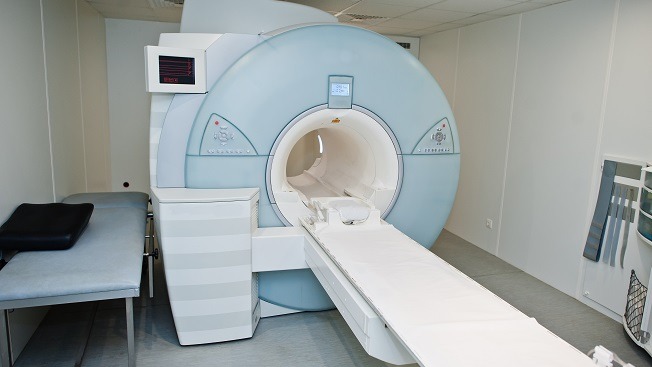1. What exactly is prostate cancer?
2. Do I need to panic if I am diagnosed with prostate cancer?
3. How serious is my cancer? (What stage is it?)
4. What are the best treatment options for prostate cancer?
5. What are other alternative treatments for prostate cancer?
6. What can I expect after prostate cancer treatment?
If you have just been diagnosed with prostate cancer, you may have feelings of anxiety, stress, or even fear. Before further reading, it is important to remember that all these are normal and you can not be judged for your feelings. But you may notice a change in your emotional state over time, things that do not need to scare you. Each patient reacts in his individual way, and there is no right or wrong way to feel about cancer.
Just the thought of cancer can be a shock and many questions may start to pop up in your mind. Taking everything in may be a challenge. You may also start thinking about the future and the way your diagnosis and future treatment will impact your life and the life of your dear ones.
In this phase, you want answers. You want exact data that you can trust to help you shape your future course of action. Without answers, your future may look shady and anxiety can overwhelm you. Being informed will give you a sense of stability, which in turn will result in taking better decisions concerning your following treatment.
But first of all, you have to understand your present condition and the changes it may bring into your current life. So let’s dive into the subject and answer the most burning questions a man diagnosed with prostate cancer may have!
1. What exactly is prostate cancer?
Prostate cancer is the most common cancer in American men, after skin cancer. About 1 in 8 Americans will be diagnosed with prostate cancer during his lifetime.
Prostate cancer is the type of cancer that forms in the prostate. The prostate is a small-sized glad, walnut-shaped, that sits below the bladder, and in front of the rectum. It is present only in men and produces the seminal fluid that nourishes and transports the sperm. The prostate gland surrounds the urethra, the tube that carries urine out of the body, having an important role in regulating bladder control. The size of the prostate can change as a man gets older, many men suffering from prostate enlargement.
Almost all prostate cancers are adenocarcinomas, their origins being in the gland cells.
Some other types of cancer that can form in the prostate gland are:
- Small cell carcinomas
- Sarcomas
- Neuroendocrine tumors
- Transitional cell carcinomas
These prostate cancer types are rare but it is advisable to ask your doctor about what type of prostate cancer you have been diagnosed with.
What does prostate cancer look like?
Prostate cancer occurs when some of the prostate cells start growing in an uncontrolled manner. This condition is classified as malignant, due to the uncontrolled growth of the cells that can form tumors.
Prostate cancer can also spread to other parts of the body. Cancerous cells can travel to the bones or other organs and form new tumors. This stage is also known as metastatic prostate cancer. It is a more advanced phase, it is harder to treat and can cause serious or even aggressive symptoms. However, even if cancer has metastasized to the bones or the bladder, it is still called prostate cancer, referring to its origins.
Does prostate cancer evolve more slowly than other cancers?
Prostate cancer is known for its slow-growing characteristic. It tends to develop really slowly over many years until it is detected. It may not even cause any symptoms, thus being more difficult to diagnose. This aspect triggers the importance of regular screenings, in order to detect this silent killer at an early stage. You may also have been diagnosed through one of these regular check-ups. However, it is relieving to know that the majority of prostate cancers that are being diagnosed are incipient cancers, totally curable, and with a high life expectancy.
Prostate cancer can be a serious problem if not detected early. It is true that it generally develops slowly, but there are also aggressive cancers that lead to many deaths because of this disease. However, there is no need to be scared right now. The good news is that more than 3.1 million men in the US who have been diagnosed with prostate cancer are still alive today.
2. Do I need to panic if I am diagnosed with prostate cancer?
The first thing you should do is not to panic.
Remember that the day of your diagnosis was not the day when your cancer started forming and growing. It is very possible that you might have had it for some time, even years, before diagnosis. That’s why this is not the moment to panic. Stress is only hurting you emotionally, limiting your capacity to make wise decisions concerning your health. Many urologists have come to the conclusion that even in its aggressive form, prostate cancer develops more slowly than other types of cancer. So, take a deep breath and focus on what you do from now on.
Can a person die from prostate cancer?
Cancer is not a death punishment. Now even less than in any other historical era. Technology and scientific research are so advanced that you do not have to think of death at all. Just think: some decades ago, when screening methods were not so wide-spread, men did not even know they suffered from prostate cancer until it was too late. But nowadays, these are pretty rare cases. You may have also benefited from a prostate cancer screening procedure and thus, have discovered the problem in due time.
In general, men are diagnosed with prostate cancer that is highly curable. Diagnosis happens today 5 years earlier than it used to be. There are some voices claiming that it may cause more harm than good to be diagnosed that early, but in most cases, it proved to be life-saving.
In terms of the death rate from prostate cancer, from an estimated number of 248,530 men diagnosed in the US in a year, approx. 34,130 will actually die from the disease. We aim for a time when nobody will have to die from prostate cancer, but until then, great efforts are being put into achieving more advances in screening and treatment. However, it is encouraging to know that prostate cancer death rates have dropped to around 50% from the mid-1990s to mid-2010’s.
If you have prostate cancer, how long will you live?
We should better talk about survival rates, than about death rates. Statistics have shown that the 5-year survival rate for men diagnosed with localized or regional prostate cancer is almost 100%. The 10-year survival rate is also 98%. These numbers apply to the stage of cancer when it was first diagnosed. If cancer was first diagnosed as being distant, or metastasized, reaching other vital organs, then the 5-year survival rate is 30%.
Do not forget that most of the time, actually almost 90% of the time, prostate cancer is diagnosed when it is confined to the prostate. This is called localized or regional prostate cancer.
Talk to your doctor to establish clearly what is your stage and what corresponding survival rate do you have. This will help you worry less about your future and can start having a more positive outlook.
Do I need to get a second opinion on prostate cancer?
You are reading this because you have been diagnosed with prostate cancer. But, getting a second opinion on a prostate cancer diagnosis from an expert in urology can be helpful from various points of view. What are they?
- When diagnosed, you may have also been recommended a treatment option. Because prostate cancer is a complex disease, it is crucial to get a second opinion to be able to confront the 2 recommendations. Some patients may benefit from surgery, while others may be recommended radiation, HIFU, or cryotherapy.
- The process of staging the disease requires a lot of expertise from the pathologist that examines the samples taken from the biopsy. But staging the cancer is the first and most important step in outlining the future treatment. If both clinical examinations prove that you have early-stage prostate cancer, then you can be sure of the stage of cancer you have.
- What were the instruments used to diagnose your cancer? Did the doctor use modern technology or traditional methods? If you have been diagnosed without the use of an MRI-targeted imaging technique, then it is advisable to solicit a second opinion to a doctor that performs MRI-guided biopsies. Why? Because the MRI scan, combined with a PSMA-PET provides a clearer picture of the pathological situation and can even accurately localize the cancerous tissue.
- If you have been diagnosed with advanced prostate cancer, requesting a second opinion can be life-saving. That is because the treatment for advanced prostate cancer needs a high personalization and only an expert urologist can successfully help you.
Do not forget that the best time to seek a second opinion is before you decide upon treatment. When meeting with an expert, maybe one recommended by your doctor, bring with you all your medical records. This way, the doctor won’t proceed into performing the same diagnostic tests but will recommend you are tests that can improve the accuracy of the diagnosis.
Having the right information is essential for making the best decision when it comes to choosing the treatment.
3. How serious is my cancer? (What stage is it?)
Wondering about the stage of your cancer is extremely normal. Actually, after diagnosis, this is the first thing that a patient wants to know. To determine the seriousness of the disease, a pathologist, the expert who assesses the tissue samples, will give you a staging system, based on the Gleason score and the results of the PSA test.
Staging is the method of describing where cancer is located, how serious it is, where it has spread, and how much it is affecting other parts of the body.
How to understand the Gleason score?
The Gleason score, which resulted after the screening methods, is certainly present in your medical documentation. If your physician has not explained to you what does the Gleason score means, here you will find out.
The Gleason score grading system is based on identifying 2 important cell patterns: how advanced is the tumor in most areas and what is the state of cells living next to the largest cancerous area. Each predominant pattern receives a score. Grade 1 is considered low-grade and Grade 5 is considered high-grade. After assigning a grade to each of these 2 patterns, they are added together and result in the Gleason score. Thus, scores can vary from 2-10, but pathologists usually assign a score from 6-10 to most prostate cancer. What is your Gleason score?
A Gleason score of 6 is considered low-grade, the cancer being slow-growing.
A Gleason score of 7 is considered an intermediate grade. In this case, it is important to know what is the primary grade, that is the score of the predominant area of the tumor. If the primary grade is 3 and the second is 4, then the chances of having it spread fast are low. But if the primary score is 4, then the cancer is more likely to spread. Do not forget to ask about the primary Gleason grade.
A Gleason score between 8-10 is considered high-risk. In this case, cancers are more likely to spread quicker. But if your cancer is grade 8, do not panic. There are treatments for advanced prostate cancer.
What are the 4 stages of prostate cancer?
Prostate cancer is known to have 4 main development stages. These stages are determined based on the pathological tests you have already done. The 4 stages of prostate cancer are:
Stage 1 prostate cancer – This cancer is confined to the prostate and has not spread to other parts of the body. It is a small cancerous formation and is considered to be slow-growing.
Stage 2 prostate cancer – This cancer is also confined to the prostate, but the cells tend to grow in an abnormal way. Even though the tumor may have affected both lobes of the prostate, it is still organ-confined.
Stage 3 prostate cancer – In this stage, cancer has already spread beyond the prostate and may have affected the nearby seminal vesicles. Stage 3 prostate cancer is harder to treat because of its expansive nature.
Stage 4 prostate cancer – The tumor may have any size and has already spread to the regional lymph nodes and even to other distant areas of the body. Stage 4 prostate cancer can not be usually cured, but there are specific treatment options to keep its symptoms under control. ‘
Ask your doctor about the stage of your cancer and let him explain to you what that means. Also, do not forget that most cancers that are being diagnosed are stage 1 or 2. So, do not worry before you have all the information.
What is the life expectancy of someone with stage 4 prostate cancer?
The life expectancy of a person with stage 4 prostate cancer depends heavily on how far cancer has spread into the body.
There is stage 4 with regional metastases, which means that cancer has spread only to the lymph nodes. The 5-year survival rate for men with stage 4 prostate cancer with regional metastases is nearly 100%.
But there can also be stage 4 prostate cancer with distant metastases. This refers to cancer that has spread to the lymph nodes and other parts of the body, such as the bones. The 5-years survival rate for these patients is nearly 30%.
Do I need to undergo additional imaging for prostate cancer?
Imaging tests are used to create pictures of certain parts of the body. These tests are being used to determine the stage of cancer and how far it has spread. If your PSA and Gleason score is low, you may not even need to go for further testing. The chances of having advanced-stage prostate cancer being low. But if your scores are higher and if at the DRE exam your doctor has felt some big lumps on the prostate, then you will need to undergo additional imaging tests. What are these? Take a closer look at them and determine which are the ones you did not undergo and may be useful for an accurate diagnosis:
- TRUS – Transrectal Ultrasound – This imaging procedure involves the insertion of a lubricated probe into the rectum to deliver sound waves that create echoes when getting in contact with the prostate. A computer receives the echoes and transforms them into black and white images of the prostate. This way, any suspicious area in the prostate can be detected. There are also newer forms of TRUS, including the Doppler ultrasound.
- MRI – Magnetic resonance imaging – These scans are created by the use of radio waves and strong magnets. This technique enables the doctor to have a clear view of the prostate and surrounding tissue. The MRI fusion-guided prostate biopsy is an approach performed before the actual biopsy to look for abnormal areas. When the biopsy is performed, a computer fuses the images from the TRUS and the MRI to create a clearer image of the prostate. This way, prostatic samples can be taken from any suspicious part of the prostate.
- Bone scan – When cancer spreads to other parts of the body, bones are first to be affected. That is why, if the Gleason score is high, you may be recommended to undergo a bone scan to determine whether cancer has spread to the bones.
- PET scan – In a PET scan, a tracer is injected into the blood that has the role of detecting prostate cancer cells into the body. PSMA PET scan is a new type of PET scan that uses a tracer the GA 68 PSMA-11, which is a protein found in large amounts in prostate cancer cells. Even if the images formed by the PET scans are not so detailed, their advantage is that they can detect cancer anywhere in the body.
- CT scan – Computed tomography scan – This procedure uses X-rays to create detailed images of the body. If the PSA and Gleason scores are high, a CT scan may be recommended to detect any cancerous cells in the lymph nodes.
There may also be other imaging procedures that you will need to discuss with your doctor.
Should I have my tumor assessed using personalized medicine?
Personalized medicine, or precision medicine, is a type of health care provided based on a person’s genes. Personalized medicine analyses the frequency of cell mutations and how the genes of the cancerous cells might affect the treatment. Precision medicine helps perform a more accurate diagnosis and a more successful treatment.
Genetic tests might be called biomarker tests, gene tests, or biochemical tests. They are usually done using blood or saliva samples or biopsy tissue. Precision medicine may guide doctors in prescribing the best prostate cancer treatment based on your genes’ specific situation.
4. What are the best treatment options for prostate cancer?
The best treatment option for you has to be based on the stage of your prostate cancer, whether it is slow or fast-growing, and on your general health.
The commonly recommended treatment options for localized prostate cancer are active surveillance, radical prostatectomy, external beam radiotherapy, or brachytherapy.
For locally advanced prostate cancer, the recommended treatments are radiotherapy combined with hormone therapy, hormone therapy alone, radical prostatectomy used with radiotherapy, or just watchful waiting.
Advanced prostate cancer is treated by means of chemotherapy with hormone therapy, hormone therapy alone, or just treatments to manage the symptoms of advanced prostate cancer.
If you have prostate cancer is it best to have the prostate removed or treated?
Men who have localized prostate cancer usually want to know what the best option is from these 2. What is important to remember is that both treatment options work well and the chance of prostate cancer recurrence is very low.
Both radiation treatment and radical prostatectomy have side effects, such as bladder, bowel, or erection problems. However, robotic radical prostatectomy, performed with the help of the da Vinci robot, ensures minimal side-effects. That is why it is considered the first line of treatment when it comes to early-stage prostate cancer. Also, there is another important reason why radical prostatectomy is the standard of treatment for localized prostate cancer. The reason is that, in case of cancer recurrence, radical prostatectomy is very less likely to be performed after radiation therapy. But radiation therapy can be a second option for men who have had radical prostatectomy before.
For many men, just the thought of complete cancer removal brings in a deep sense of relief. Also, many others want to avoid radiation and all its side effects.
Men who choose either treatment have a low-risk of dying from prostate cancer.
What is it like to have robotic surgery for prostate cancer?
Robotic prostatectomy is a minimally invasive procedure that ensures complete removal of the prostate. It is performed with aid of the da Vinci robot, one of the most advanced medical robots in the world.
The surgical instruments are being controlled by the surgeon who is maneuvering the console. These are the steps of robotic surgery:
- A few keyhole incisions are being made in the patient’s abdomen and fine surgical instruments are being placed inside the abdomen.
- For enhanced precision, a 3D endoscope is being placed inside.
- The surgeon controls the movements of the robotic instruments to cut out the prostate
- The cancerous prostate is being removed through one of the keyholes.
Due to improved precision, less bleeding, and advanced imaging techniques, the advantages of robotic prostatectomy are surpassing all of the other treatment options available.
These benefits include a quicker recovery period, due to the small incisions and minimal blood loss. Also, the scarring is minimized. Urinary and sexual functions are being spared by means of precise robotic movements. And most importantly, the cancer is completely removed, ensuring a great sense of relief. These advantages are called “Treatment Trifecta” and refer to the preservation of the urinary function, the sexual function, and the total cancer removal with PSA undetectable after the surgery.
5. What are other alternative treatments for prostate cancer?
Besides the above-listed treatment options for prostate cancer, including hormone therapy, radiation therapy, cryotherapy, brachytherapy, active surveillance, and others, there are also other alternative treatments. These treatments include some important lifestyle changes that are known to impact the development of prostate cancer. Of course, these changes are recommended whether or not you are on a certain treatment for prostate cancer.
These complementary methods may include vitamins, minerals, herbs, special diets, acupuncture, or even massage. But always have in mind that these methods may be effective in relieving the symptoms but may not successfully work on treating cancer.
What are the foods to be avoided for prostate cancer?
It is known that a healthy diet rich in nutrient fruits and vegetables can have a positive effect on fighting prostate cancer.
Red meat, processed meats, and fatty foods are bad for men diagnosed with prostate cancer. Instead, try eating more plant-based foods, such as soy, cruciferous vegetables such as broccoli or cauliflower, or tomatoes and carrots. Lycopene, particularly contained in tomatoes, is a very powerful antioxidant. Some researchers believe lycopene may retard the growth of prostate cancer cells.
Pomegranate juice is another important cancer-fighter. Researchers have already proved that it has positive effects in reducing cancer. You can incorporate this nutrient into a balanced diet.
But what about palmetto berries for prostate cancer?
These have been identified as potentially helpful supplements for certain prostate conditions, such as BPH, but the effects on prostate cancer have not yet been proven. Also, saw palmetto seemed to have more benefits when taken along with African palm tree bark extract. But these are not supplements regulated by the FDA and there is no guarantee that they will actually work.
Should you avoid dairy intake if you have prostate cancer?
Researchers have shown that fermented dairy products may affect prostate cancer risk through their negative effects on the intestinal microbiome. Also, milk intake can increase the expansion of prostate cancer because of the elevated insulin-like growth factor- I, which is linked to an increased risk of prostate cancer. Also, dairy products have a negative impact on testosterone levels, the hormone that fuels the prostate cancerous cells.
What lifestyle changes should I make if I am diagnosed with prostate cancer?
Nutrition changes are an important part of your cancer journey. These changes will help your body be prepared to better fight the disease. But there are also other lifestyle changes you can make.
- Be physically active – You do not need to have a highly intensive physical activity, but moderate exercises need to be part of your daily routine.
- Maintain a healthy weight – This is linked to having a healthy diet and exercising. Researchers have found that obese patients tend to develop more aggressive forms of prostate cancer. If you think that you should lose some weight, this is the time to do it.
- Limit your alcohol intake – men who have 2 or more drinks/day have a 20% increased risk of prostate cancer
- Stop smoking – Smoking increases the risk of any cancer
6. What can I expect after prostate cancer treatment?
After treatment, you may be relieved to know that your cancer is gone and you can get back to your normal life. Your urinary and sexual functions may be a little disrupted after treatment and you may suffer from the usual side-effects. But, if you have undergone radical prostatectomy, you have to know that these side-effects are ephemeral and you will resume your normal activities as soon as possible.
The incontinence improves slowly over a period of 6 months. After treatment, you can start doing Kegel exercises, to strengthen your pelvic muscles.
After prostate surgery, many men have problems with erections. Normally, these symptoms are gone after a short while. It all depends on various factors: your age, your overall health, and whether or not you have been on ED medication before surgery. Normally, your sexual function will return almost back to normal. But, if not, there is a series of erectile dysfunction treatments, such as Viagra or vacuum pump, that have great results in these cases.
Living as a prostate cancer survivor may come with certain feelings of stress and anxiety, especially if you are thinking of cancer recurrence. It is very important to attend all your follow-up appointments and to answer all the questions your doctor will ask you. Your doctor can also develop a survivorship care plan. This includes the list of treatments that you have received, the schedule for follow-up exams, the list of possible side-effects, and suggestions for what can improve your health.
As a last thought, remember that being diagnosed with prostate cancer is not a death sentence. It is a challenge that many men have overcome and you are one of them!










